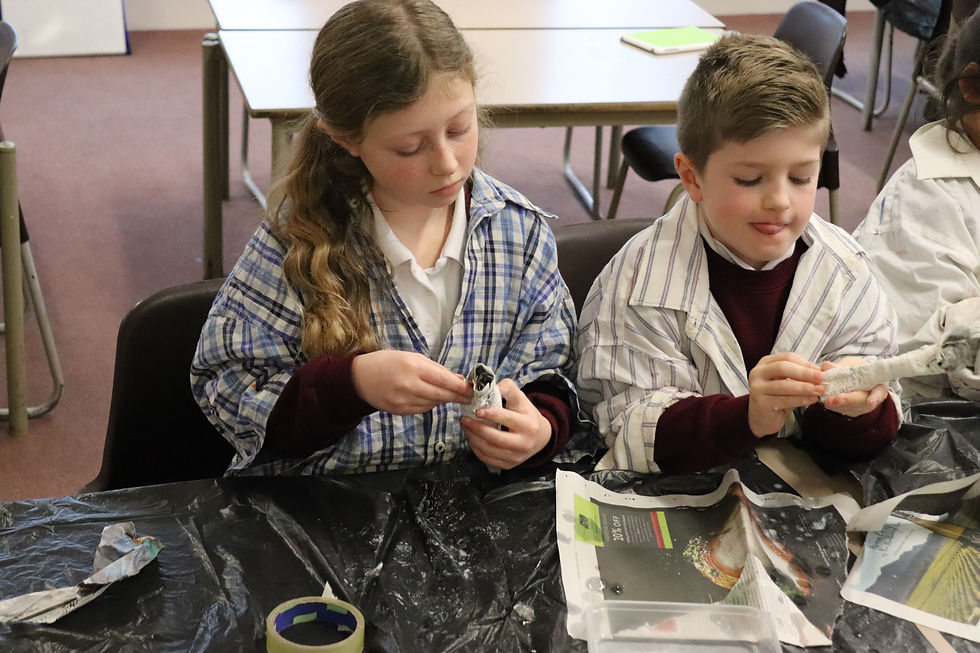Hamstel Junior School
Hamstel Road, Southend on Sea, Essex, SS2 4PQ - 01702 468048
Excellence in Everything
Art & Design
“All children are artists. The problem is how
to remain an artist once you grow up.”
Pablo Picasso
We consider art to be an incredibly important and influential part of a child’s learning experience. We see art as a vital part the curriculum as it allows children of all ages and abilities to communicate and experiment in a creative and varied manner. Art can also help children to make connections with others both in school and the wider community. We use art to celebrate other cultures and to help our children to learn about a range of perspectives. We learn about the work of a number of artists and show case our artistic skills in other areas of the curriculum. We take pride in our art work with many pieces displayed in classrooms and corridors.
“A true artist is not one who is
inspired, but one who inspires others.”
Salvador Dali
At Hamstel Junior School children are artists who:
-
are curious about the world around them.
-
experience art through touch, sight, sound and feel.
-
use their art experiences to explore ideas and raise different kinds of questions.
-
develop imagination, creativity and natural curiosity using a wide range of stimuli, materials and processes to develop the ability to communicate and express creative ideas and reflect on their own work.
-
use appropriate artistic vocabulary to communicate ideas.
-
use creativity and imagination to make informed judgements and practical decisions.
-
explore and appreciate art and design.
-
can critically reflect, enjoy, persevere, co-operate, take turns, and be creative, inventive, and open minded.
-
can apply key skills to enhance their understanding of art and artistic concepts.
-
have opportunities to have a meaningful understanding of their immediate environment, culture, and language.
-
explore and express their ideas and feelings concerning personal, social, environmental, moral and spiritual issues through creative activities.
-
develop an awareness of art through the understanding of methods used by practising artists.
Year 3
In Year 3 children will learn:
-
to use a sketchbook for experimenting and planning and use these skills and effects in a final piece of work
-
to explore complementary colours, colour as tone, warm and cold colours
-
to create work in response to natural and manmade objects
-
to plan a sculpture
-
to explain what he/ she likes and dislikes about their work
-
about artists in history
Year 4
In Year 4 children will learn:
-
to use a sketchbook for collecting ideas and developing work
-
to draw objects with correct proportions
-
to create different effects by using tools and techniques
-
to experiment with creating mood, feeling, movement and areas of interest
-
to print on fabric
-
to adapt and improve work using skills taught
-
to use technical terms to articulate how to make improvements to work
-
to describe some of the key ideas, techniques and working practices of artists, architects and designers
Year 5
In Year 5 children will learn:
-
to develop ideas and explain choices for the materials and techniques used
-
to investigate and use unfamiliar materials and techniques
-
to represent things seen, remembered or imagined in three dimensions using lines, tone and shading
-
to mix colours to express mood, divide foreground from background or demonstrate tones
-
to develop skills in using clay
-
to add a range of collage materials to a background
-
to return to work and use a wide range of materials
-
to research various artists, architects and designers and discuss their processes and explain how these were used in the finished product to evaluate work
Year 6
In Year 6 children will learn:
-
to select ideas and develop these through research
-
to refine learnt techniques
-
to adapt final work following feedback
-
to begin to develop an awareness of composition, scale and proportion
-
to use simple perspective in their work using a single focal point and horizon
-
to use techniques, colours, tones and effects in an appropriate way to represent things seen
-
to produce intricate patterns and textures in a malleable media
-
to use and explain choices for different techniques, colours and textures in sculptures/ textiles
-
to create intricate printing patterns by simplifying and modifying sketchbook designs
-
to follow a design brief
-
to describe the work and ideas of various artists, architects and designers, using appropriate vocabulary and referring to historical and cultural contexts
-
to justify preferences towards different styles and artists







